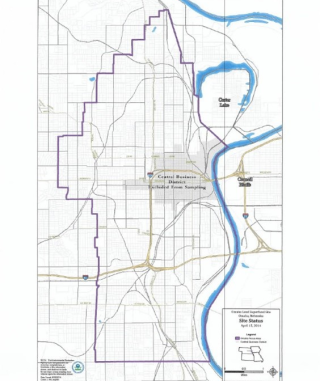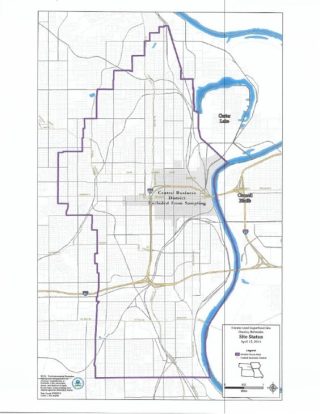
LENEXA, KAN. (OCT. 28, 2022) – The U.S. Environmental Protection Agency (EPA) unveiled its historic National Lead Strategy before a cooperative agreement renewal ceremony with the Douglas County Health Department today in Omaha, Nebraska.
Omaha was once home to a large lead smelter and lead battery recycling plant that are estimated to have released over 400 million pounds (200,000 tons) of lead particles into the environment, with much of that ending up in residential areas.
The National Lead Strategy reflects the Agency’s commitment to protecting children from harmful exposures to lead, while reducing disproportionate impacts of lead exposure on high-risk communities. EPA will continue to work to protect people from lead through the historic investments from President Biden’s Bipartisan Infrastructure Law to clean lead-contaminated soil at Superfund sites and replace drinking water lead pipes and service lines.
“The release of EPA’s National Lead Strategy’s during National Lead Poisoning Prevention Week is more than a symbolic gesture. It is a reflection of the Biden-Harris administration’s commitment to substantially reducing childhood lead exposure,” said Office of Land and Emergency Management Deputy Assistant Administrator Carlton Waterhouse. “With this strategy, we seek to not only reduce lead exposure in children, but also to eliminate the historic racial and socioeconomic disparities in blood lead levels and promote environmental justice with actions that will improve the lives of our nation’s residents that live in disproportionally impacted communities.”
Omaha was chosen as the location to announce EPA’s National Lead Strategy as historic smelting operations there resulted in the largest residential lead Superfund site in the United States.
Following the announcement of the National Lead Strategy, EPA Region 7 held a ceremony to recognize the seven-year, $12.7 million renewal of the Agency’s cooperative agreement with the Douglas County Health Department (DCHD), with $1.8 million awarded annually.
The agreement renewal will provide funding for the county’s free blood lead screening services for children 7 years old and under, as well as pregnant and nursing women, residing within the Omaha Lead Superfund Site. The renewal D will also provide funding for indoor lead dust screening, as well as education and outreach to medical professionals within the site boundary.
“Renewing our cooperative agreement with the Douglas County Health Department is an essential step to ensuring residents within the site boundary continue to have access to free blood lead screening,” said EPA Region 7 Deputy Administrator Ed Chu. “I encourage parents and caregivers of children to sign up for testing, as children are particularly vulnerable to the effects of lead poisoning.”
“Omaha is home to the country’s largest residential lead Superfund site. We are honored to work alongside the EPA to serve those in our community who are impacted by lead contamination,” said Douglas County Health Director Dr. Lindsay Huse. “Lead exposure is a serious and preventable cause of cognitive harm to many children, and this collaborative agreement with our federal partners means that we can build upon the great work that has already been done in our community and reach even more potentially impacted families, giving every child the best start possible to lead happy and healthy lives.”
EPA and the city of Omaha also have a cooperative agreement in place for the cleanup of the Omaha Lead Superfund Site.
Background
The Omaha Lead Superfund Site, consisting of approximately 27 square miles of property within the metro area of Omaha. Soils across a broad swath of the city were contaminated with lead over more than a century, primarily from the operation of a major lead smelter situated along the west bank of the Missouri River, which sent particulate lead aloft from its smokestacks and deposited it on the landscape. Other sources of lead contamination at the site included a former paint manufacturer, former lead battery plant, and the decay of lead-based paint from homes and other structures.
EPA and the city of Omaha have completed residential soil sampling at over 40,000 properties and residential soil remediation at over 13,000 properties within the site. Today, only 165 residential properties remain to be sampled and 594 properties still need soil remediation.
- Read the Lead Strategy.
- Learn more about the Lead Pipe and Paint Action Plan.
- Learn more about Douglas County’s Lead Poisoning Prevention Program.
- Learn more about the Omaha Lead Superfund Site.
# # #
Learn more about EPA Region 7
View all Region 7 news releases
Connect with EPA Region 7 on Facebook
Follow us on Twitter: @EPARegion7

